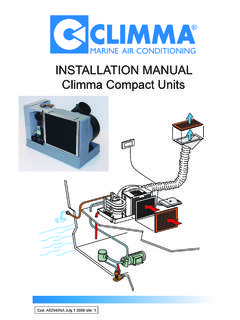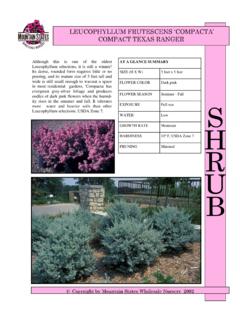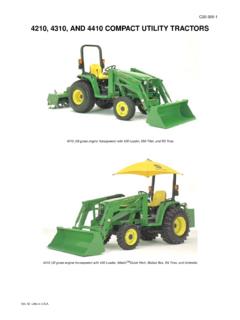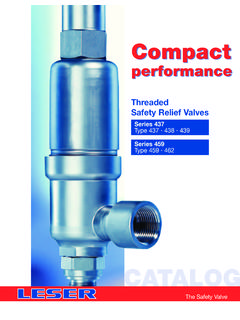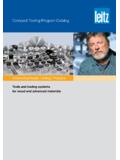Transcription of ModelSX404; Sager Extreme Compact Bilateral …
1 Instructor s ManualModelSX404; Sager Extreme Compact BilateralModels; S301 Form III Single, S300 Infant Bilateral ,S304 Form III Bilateral , Super Sager Combo Pacs #1 and #2, and the MINTOFRACTURE KITJ. M. Fikes, BSN, MSN Borschneck, Edited Borschneck, BATable of contentsSection One:Instruction guidelines1 Section Two:The anatomy and physiology of fractures4 Section Three: Sager s Application for splinting femoral fractures13 Section Four: Sager s features, advantages and benefits23 Section Five: Sager components27 Section Six: Sager Questions and answers30 Section Seven:Contraindications and cleaning36 Section Eight, Appendix A:Practical exam/Student exercise for the S300 & 400 Series Splints 38 Section Nine:The Minto FractureKit (MFK)50 Section Ten: Appendix B:Practical exam/Student exercise for the The Minto FractureKit (MFK)59 Additional HandoutsHandouts:User s Handbook, Why Traction,Traction Force Challenge, Emergency Orthopedics.
2 The Extremities, USA ICD9 Projections, Suggested Reading, Power Point presentation and/or overhead projections For more information on Sager Emergency Traction Splints, visit our world wide web site at: Research & Development, s of: Sager Emergency Traction Splints, Minto Fracture Kit(MFK) and other quality medical a registered trademark of Minto Research & Development, :Jerald M. Fikes, BSN, MSN, Director, Emergency Services, MercyHospital, Redding, CA., Anthony G. Borschneck, , Redding, CA Editor: Anne L. Borschneck, AA, BAMinto Research & Development 1998 - 2010 Minto Research & Development, Inc20270 Charlanne DriveRedding, CA, USA, 96002-9223 Tel:1. 800. 642. 6468530. 222. 2373 Fax:530. 222. 0679E-Mail: guidelinesThe following lecture guidelines were developed to assistALS and BLS Instructors in their endeavor to introduce Sager Emergency Traction Splints and the Minto Fracture Kit tostudents participating in EMT and Nursing/Paramedicprograms.
3 These guidelines are only intended for use as a basicreference tool. Please defer to federal, state, and local medicalprotocol for definitive analysis and Emergency Traction Splints and the Minto Fracture Kit1 Introduction to Sager Emergency Traction Splints:Introduce the (SX404) Sager Extreme Compact Bilateral , (S304) Sager Form III Bilateral , the(S301) Form III Single and the(S300) Sager Infant Bilateral Emergency Traction Splints to theclass using your training the class review the training video The Science Of Traction Splinting Application Guidelinesfor Sager models SX404 Sager Extreme Bilateral , S304 Form III Bilateral , S301 Form III Single and S300 Infant Bilateral . Demonstrate the application of the SX404, S304 and/or S301 on a volunteer from the class. If available, demonstrate the application of the S300 on a pediatric volunteer or mannequin.
4 Have each class member practice with the splint(s) until they demonstrate to youthat they have mastered its use in accordance with the application instructions. Ask if there are any questions regarding the use of Sager Splints and address these in accordance with the provided instructional materials (and state/local medicalprotocol). If you are unsure of the answer to a question record it and contact yourlocal or state education service for the answer. Split the class into three equal groups. Have one group write the written test, one group practice with the splint(s) and one group take the practical test. Rotate through the groups until each student has (1) practiced with the splint, (2) demonstrated they can apply it correctly, and (3) taken the written exam. Mark the written exam. Students who fail the written exam should review the material and retake the handouts of:1 Sager Extreme User s Handbook (model SX404)2 Sager Form III User s Handbook (models S304,S301, & S300)3 Why Traction (Reprint from JEMS)4 Traction Force Challenge (Reprint from EMS Magazine)5 Emergency Orthopedics: The Extremities (Reprint)6 Important Economical Considerations7 These Are The Facts8 USA ICD9 Projections (1997)Trials using a Sager Splint in practicesituations should beundertaken with the patient wearing looseshorts and jeans so thatnatural genital mobilitycan take practical exam has been provided for your the correct application of Sager Splints 1 person application in under 2 minutes!
5 2 Sager Emergency Traction Splints and the Minto Fracture KitApplication of Model S301, Sager Form III Single Leg Traction Splint is similar to that of itsbilateral cousin Model S304. However, the unilateral nature of the S301 requires that whenpositioning the Splint, the Traction (Pulley) Wheel be placed on it s side and towards the injuredlimb. To accomplish this, the S301 Outer Shaft must be disconnected from the ArticulatingBase and Cushion. Simply press the Button Release Latch and rotate the Splint until the TractionCable is on the same side as the fractured Femur. Reconnect the Outer Shaft to the ArticulatingBase and Cushion. Follow the easy application stages of Position, Set and Secure to completethe Button Release LatchRotate splint so that the Traction (Pulley) Wheel is on the same side as the injured limb.
6 Reconnect the Outer Shaft to the Articulating Base and S301, Sager Form III Single Button Latch take note: During operation of the Sager Splint, alwayspull the cable parallel to the shaft of the avoid damage to thecable do not dangle theSplint by the MalleolarHarness (ankle harness). Do not let the cable snap back to the zero Emergency Traction Splints and the Minto Fracture Kit31234 Sager Emergency Traction Splints and the Minto Fracture KitSection Two:Anatomy, physiology andtreatment of femoral fractures The human pelvis is a closed bony ring that isstrong and massively constructed. It is thefound a tion for the torso and provides supportfor the lower limb attachment and is shaped so that the ischial tuberosity formsa platform for sitting in an upright position. Thisoccurs because the ischial tuberosity is themost distal part of the pelvis.
7 When the legs areflexed anteriorly, all the weight of the body canrest unencumbered on the ischial tuberosities.(Review PowerPoint tutorial overview)Each Tuberosity is medial to the shaft of the Femur, and is located half the distance betweenthe midline Symphysis Pubis and the Femoral Shaft. They form the base-line of the Uro-genitaltriangle which slopes anterior and cephelad. The external Genitalia in both sexes are attachedat the apex of the Uro-genital triangle, and because of this both sexes can sit straddling seatsand saddles without discomfort or injury. The largest muscle mass in the human body is located surrounding the length of the fracture of the Femur occurs, it can result in: Laceration of arteries, veins and nerves at the site of the fracture. Severe muscle spasms resulting in Bone fragment overriding, deformity and shortening of the limb.
8 Decreased tissue pressure resulting in further bleeding and shock, as well as severe pain. In addition, spasm of the Psoas and Piriformis Muscles acting on the Proximal fragment of theFemur may cause a flexion, abduction and external rotation relationship between the Pelvis and Femur in AP position. Note that the Ischial Tuberosity is half the distance from mid-line to Femur. Ischial Tuberosity and Femur are on the same plane. Note how the Ischial Tuberosity protrudes no more than 1-2 cms.(PowerPoint #2) Sager Emergency Traction Splints and the Minto Fracture Kit5fig 1fig 2 Comparative application of tractionApplication of traction breaks the spasm and eliminates much of the pain. It also causesalignment of the bone fragments and subsequent increased tissue pressure. This reduces andcontrols bleeding and shock, and prevents further nerve, vascular and tissue damage.
9 It is clearthat properly applied traction and immobilization of a fractured Femur helps control shockand reduces traction needed to break the spasm of muscles associated with a fractured Femur is a productof the traction force and the length of time it is applied. A very large traction force only needsto be applied a short while for muscle fatigue and relaxation of the spasm to occur. Large tractionforces, generally in excess of 30 to 50 pounds can in some cases control spasm in a fewseconds. However, there is a risk with this mode of traction. It may result in nerve, vascular, muscleand soft tissue injury, as well as over-extension of bone fragments. Gentle traction, .. the amountof pull required to accomplish this (traction) will vary but rarely exceed 15 pounds. This is gentletraction, and the least amount of force necessary is the amount that should be employed (American Academy of Orthopedic Surgeons, Emergency Care and Transport of the Sick andInjured, Third Edition, George Banta Co.)
10 , Inc., 1981, San Antonio, TX, pg.:142)Skeletal comparisons between Sager and HareHare Ischial Pad Splint. Angle of malalignment is 51 Traction Splints provide near perfect s Near-perfect alignment when applied.(PowerPoint #3)6 Sager Emergency Traction Splints and the Minto Fracture Kitfig 4fig 3fig 5fig 6 Safe tractionSafe traction for field use should be traction in a known amount prescribed by protocol or amedical consultant. It should also be traction that is dynamic in nature using a resilient memberthat permits graded reduction of traction force as the muscle spasm decreases and leglength increases. It should avoid the pitfalls of rope, weight and pulley traction which is aconstant and unrelenting force that can result in over-extension of the bone elements. Thismethod is more conducive to a hospital environment where it can be monitored at length, underthe care and supervision of an Orthopedic or other Medical Consultant.
